From Boomers to Zoomers: Embracing the Power of Generational Diversity
The workplace has looked and felt different for the past few years. For the first time in history, there are five generations in the workplace. With each generation creating unique challenges for employers, plus changing demographics and labor shortages, what can the business world do?
It’s a complex situation. Each generation has different preferences related to communication, teamwork, leadership style, technology, motivators, job loyalty, desired benefits, work-life balance, etc. If these preferences aren’t taken into consideration, a talented and important percentage of the workforce could be excluded from your hiring pool, and opportunities to innovate could be missed.
What are the differences among generations currently in the workforce? Why do these differences exist, and how can they be beneficial in a professional environment?
▪️ Traditionalists (born 1900–1945) Loyal to the company, dedicated, disciplined, job for life, retiring later
▪️ Baby Boomers (born 1946–1964) Loyalty, experience, authoritarian, structure, clear goals, recognition, bonuses, promotions
▪️ Generation X (born 1965–1980) Latchkey, work ethic, flexibility, skeptical of authority, work-life balance, independent, feedback in any form, professional development
▪️ Millennials (born 1981–2000) Technologically savvy, student loans, want financial stability, sustainability, sense of belonging, career path, employee experience, flexibility and freedom, wellness, sense of purpose
▪️ Generation Z (born 2001–2020) Digital natives, social media, new technology, most diverse generation, social responsibility, empathy, open communication, DEI, flexibility, mentoring, mental health, career development, one-on-one meetings
So, we know the different things generations typically expect and bring to the workforce, but so what?
The “what” here is that each generation has been shaped in their own time by national events, relationships, values, parental expectations, technology, and so much more. Differences can be scary (we’ve all read the articles on how hard it is to work with millennials and Gen Z, written by Gen Xers and baby boomers). But what can you, as a leader, do to work effectively across generations while also keeping the workplace productive, positive, and attractive to new talent?
- Be open minded – Acknowledging that there are generational differences is one thing; being sympathetic to these changes is another. Does your baby boomer coworker prefer to take pen and paper notes, while your Gen Z coworker prefers putting everything into a shared document? Do your Gen X coworkers want everything in an email and your millennials just want to be texted? If it isn’t hurting productivity, the small things we allow our people to do can be big things when working with different generations.
- Communicate effectively – Some generations take feedback harder than others, or may not understand the seriousness of a situation if using indirect language. Make sure your communications are clear and free from sarcasm or ambiguity, and ensure your message was received the way you intended.
- Respect – This goes both ways up and down the generational chain. Respect the experiences, expertise, and ideas each generation can bring to the table. Everyone can contribute and should be included in brainstorming sessions, opinion gathering, and representation at events or offices.
- Flexibility – Millennials and Gen Z are receiving pushback on their need for work-life balance and disconnecting from work after business hours. This isn’t something to be ignored. If not acknowledged, these generations could look elsewhere for a more flexible role. On the other hand, you may have a baby boomer coworker who works late hours and doesn’t appreciate being told to log off at 5 p.m. Be flexible with what is allowed within your teams; again, if it’s not hurting productivity, small allowances go a long way.
- Recognition – Everyone wants to be appreciated, but almost everyone wants to be appreciated differently. For traditionalists and baby boomers, maybe it’s a promotion. For Gen X and millennials, maybe it’s more money. For Gen Z, it may be new experiences and a flexible hybrid work schedule.
The oversimplified and biggest takeaway from this is simple. There are differences across the generations, of course. The best way to learn how anybody wants to be communicated with, be respected, be compensated, or structure their workday is to talk to your people, often and directly. Knowing what generations want in general is a helpful tool in your leadership toolkit, but asking, “How can I give you experiences at work that matter to you?” will go further quicker. Everybody knows what they want and it changes all the time! But you’ll never know what will truly benefit someone until you ask directly.
If done correctly, you can have a thriving workforce of multigenerational teams who mentor each other, share ideas, work comfortably, communicate clearly, and stick around. It’s not easy but it’s simpler than you’d think!
To learn more about creating productive and diverse workforces or leadership training to support your team, contact Jan Edman at jan.edman@mranet.org and visit our website at www.mranet.org to learn more about what MRA can do for you!




